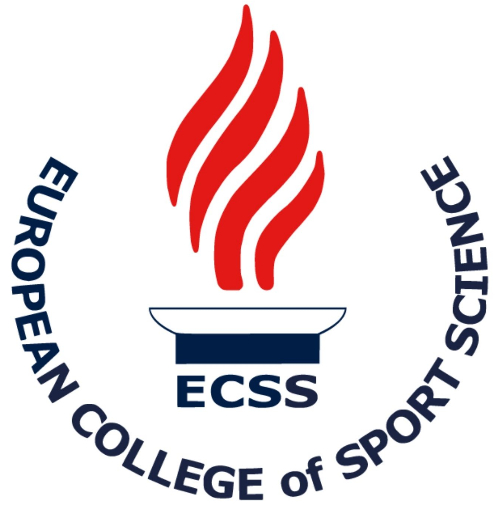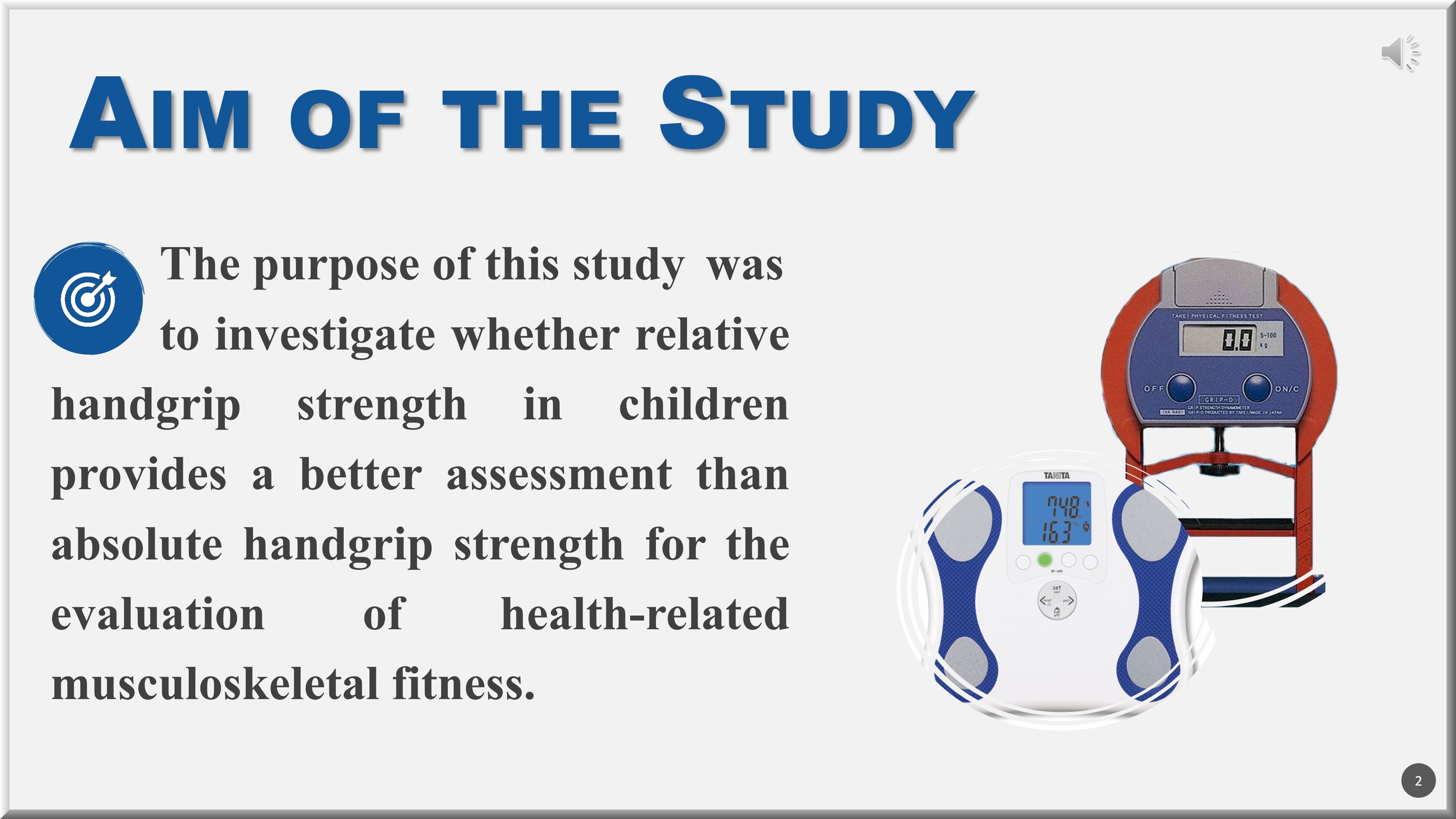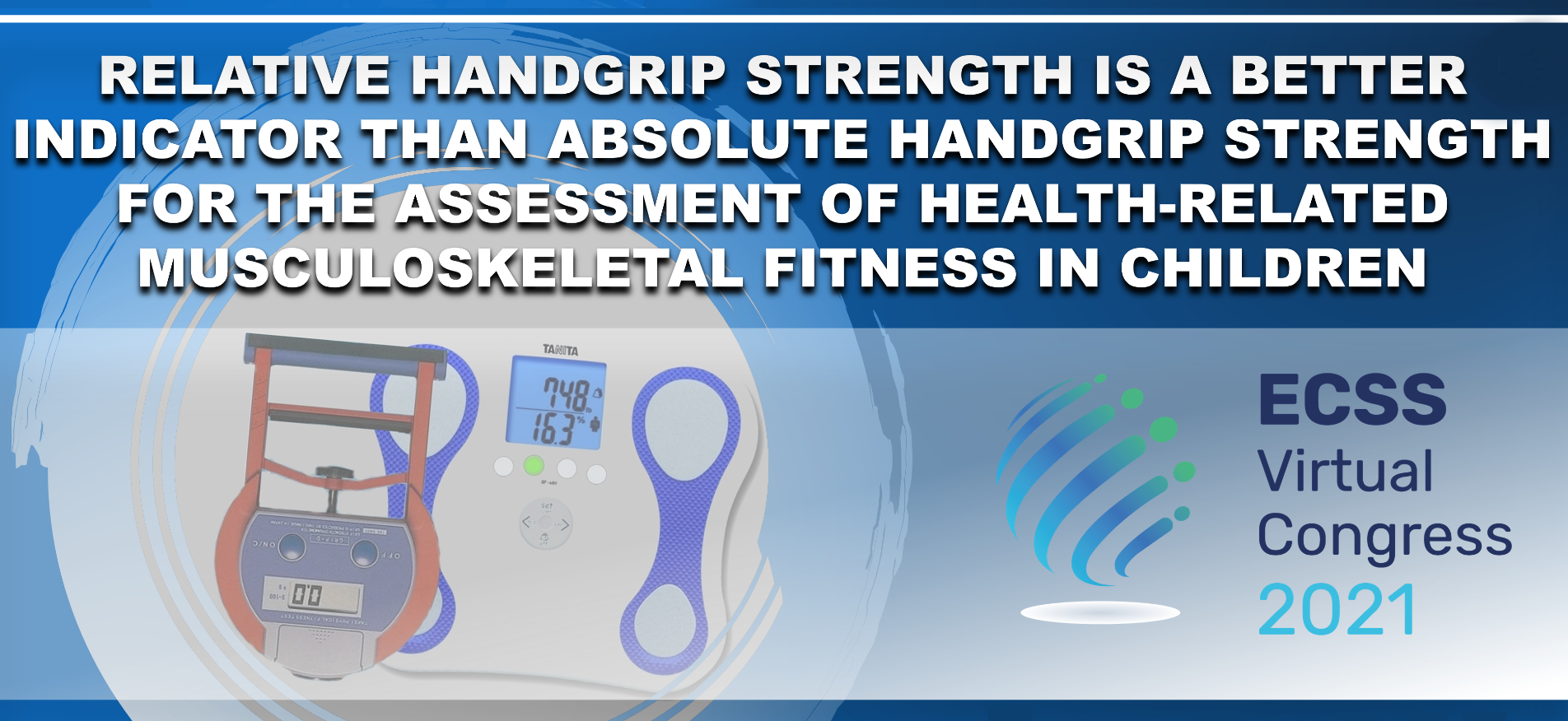ECSS Annual Congress 2021

ECSS 2021
26th Annual Congress of the European College of Sport Science (ECSS)
VIRTUAL CONFERENCE
www.ecss-congress.eu/2021
Video format: MP4 | watch on YouTube
ABOUT THE CONFERENCE
The European College of Sport Science (ECSS) organizes the biggest scientific conference in sports science in Europe, called ECSS Annual Congress. The ECSS Congress is one of the most prestigious events in the world, with around 3 000 researchers participating every year. I presented in this event in 2019 and 2020. Following the COVID-19 pandemic, ECSS organized a Virtual Congress held on 8-10 September 2021.
OUR CONTRIBUTION
At this Congress I presented findings on relative and absolute handgrip strength in children. Our presentation was part of the pre-recorded Oral presentations from the official scientific programme at the Virtual ECSS Congress 2021. The abstract was published in the conference proceedings book of the 26th Annual Congress of the ECSS, and together with our presentation are both available for download on this page. After the Congress, our study will be built upon further and the complete findings will be published in a peer-reviewed journal.
Relative handgrip strength is a better indicator than absolute handgrip strength for the assessment of health-related musculoskeletal fitness in children
Pre-recorded Oral Presentation (Virtual)

ECSS Annual Congress 2021
26th Annual Congress of the European College of Sport Science
RELATIVE HANDGRIP STRENGTH IS A BETTER INDICATOR THAN ABSOLUTE HANDGRIP STRENGTH FOR THE ASSESSMENT OF HEALTH-RELATED MUSCULOSKELETAL FITNESS IN CHILDREN
Stefan Kolimechkov1, Lubomir Petrov2
1STK Sport, United Kingdom
2National Sports Academy, Bulgaria
ABSTRACT
INTRODUCTION:
The handgrip strength (HGS) is part of many physical fitness test batteries in children, and it has been the most widely applied field-based test to assess musculoskeletal fitness. The aim of this study was to investigate whether relative HGS in children provides a better assessment than absolute HGS for the evaluation of health-related musculoskeletal fitness.
METHODS:
This study included 62 school children (32 boys and 30 girls) from the United Kingdom between 6 and 10 years of age. Written informed consent was obtained from the parents prior to testing. The participants completed the Alpha-Fit test battery, which included HGS, standing long jump, 4x10m shuttle run (4x10m SRT), and 20m shuttle run tests (20m SRT). Percentile scores for the results from each test were calculated. Height and weight were measured, and BMI was calculated. Relative HGS was calculated as the mean absolute HGS from both hands divided by body weight. The participants were divided based on their BMI assessment: ‘healthy’ (n=30, BMI percentile score < 85) and ‘overweight and obese’ (n=32, BMI percentile score > 85). Comparisons were made by using the percentile scores. Furthermore, the participants were also divided by BMI and gender to compare both absolute values and percentile scores of all tests: ‘healthy boys’ (n=15), ‘overweight and obese boys’ (n=17), ‘healthy girls’ (n=15), ‘overweight and obese girls’ (n=15).
RESULTS:
The percentile scores of the standing long jump, 4x10m SRT, and 20m SRT in the ‘healthy’ children were significantly better than the ‘overweight and obese’, and showed better health-related motor, musculoskeletal and cardiorespiratory fitness. However, the absolute HGS percentile score was lower for the ‘healthy’ children, and did not show significant difference between the groups (67.8 for ‘healthy’ vs 74.7 for ‘overweight and obese’). Similar findings were registered when the absolute HGS and its percentile score were adjusted for gender: 14.41 ± 3.51 kg for ‘healthy’ boys vs 16.26 ± 4.14 kg for ‘overweight and obese’ boys, and percentile score of 61.61 ± 23.56 vs 68.05 ± 28.90, respectively, (p > 0.05); 15.68 ± 3.79 kg for ‘healthy’ girls vs 17.17 ± 3.20 kg for ‘overweight and obese’ girls, and percentile score of 74.03 ± 26.75 vs 82.28 ± 22.12, respectively, (p > 0.05). Therefore, both the absolute value of the HGS and its percentile score did not differentiate between healthy and overweight children. On the other hand, the relative values of the HGS were significantly better in favour of the ‘healthy’ boys (0.50 ± 0.08 vs 0.41 ± 0.09 kg/kg body weight, p < 0.05) and girls (0.52 ± 0.09 vs 0.39 ± 0.05 kg/kg body weight, p < 0.001).
CONCLUSION:
The relative HGS is a better indicator than the absolute HGS for assessing the health-related musculoskeletal fitness in children. Future research should establish percentile scores for the relative values of the HGS test in children in order to accurately assess their health-related muscular strength.
Presenting Author: Dr Stefan Kolimechkov
Date & time: 10 September 2021
Pre-recorded Oral Presentations, Virtual
Session-ID: OP-MH02 Children
Abstract-ID: 0326
How to cite this study:
After the 26th ECSS Annual Congress, our study will be built upon further and the complete findings will be published in a peer-reviewed journal, so you can cite the article as follows: coming soon

